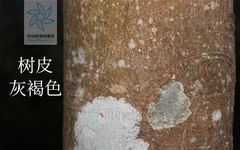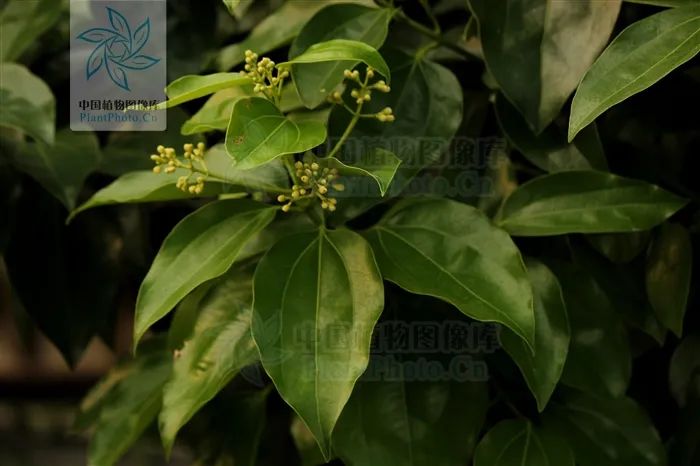
Cinnamon not only possesses therapeutic effects but is also rich in nutrients and a master of seasoning, making it a fine example of a dual-use product in both medicine and food. There is a historical legend about cinnamon related to one of the four great beauties of ancient times, Xi Shi.
It is said that when Xi Shi was playing the guqin and singing her self-composed song “Falling Leaves of the Wutong”, she suddenly felt a sore throat. She used a large amount of herbs to clear heat and drain fire, which alleviated her symptoms, but they returned once the herbs were stopped. Later, another doctor was consulted, who noted her cold limbs, clear and frequent urination, and a weak pulse, and prescribed one pound of cinnamon. The pharmacy owner, knowing a bit about Xi Shi’s condition, couldn’t help but laugh at the prescription: “A swollen and painful throat is a sign of great heat; how can one consume the spicy and warming cinnamon?” Thus, he refused to dispense the medicine, and the attendant had to return empty-handed. Xi Shi said, “This person must be a skilled doctor and cannot be joking. There is no other method available now; let me try a small amount first.” Xi Shi chewed a small piece of cinnamon, finding it fragrant and sweet. After chewing half a pound, her pain disappeared, and she could eat without issue, which brought her great joy. The pharmacy owner, upon hearing this, sought advice from the famous doctor. The doctor replied, “Xi Shi’s ailment is a throat disease caused by deficiency and cold yin fire, which cannot be treated without using fire to return to the source.” Cinnamon is used to treat throat abscesses, which belongs to the method of treatment from the symptoms.
Next, let’s take a detailed look at cinnamon together~
01
Plant Source
This product is the dried bark of the plant Cinnamomum cassia Presl of the Lauraceae family. It is harvested in autumn and dried in the shade. It can be used fresh in slices or ground into powder.
02
Plant Morphology
Stem: The bark is gray-brown, and the old bark can be up to 1.3 cm thick.
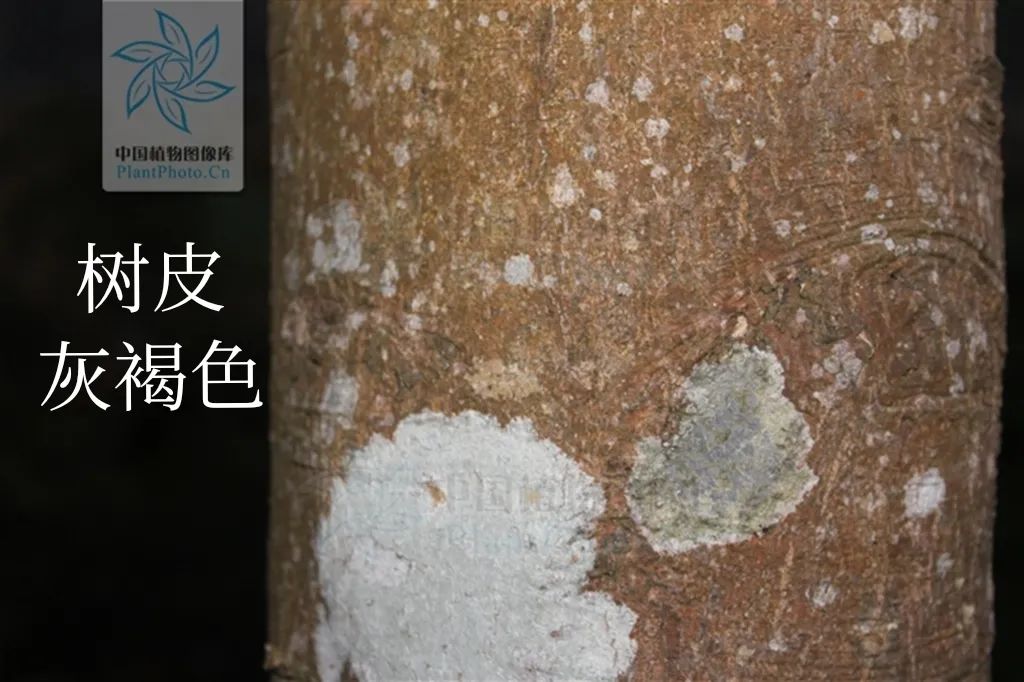
Branches: Young branches are slightly four-angled, yellow-brown, with longitudinal stripes, densely covered with gray-yellow hairs.
Leaves: The leaves are long oval or nearly lanceolate, measuring 8-16(-34) cm in length, with a slightly abrupt tip and a wedge-shaped base, sparsely covered with yellow hairs on the underside, with the edges rolled inward and three prominent veins from the base; the petiole is 1.2-2 cm long, covered with yellow hairs.
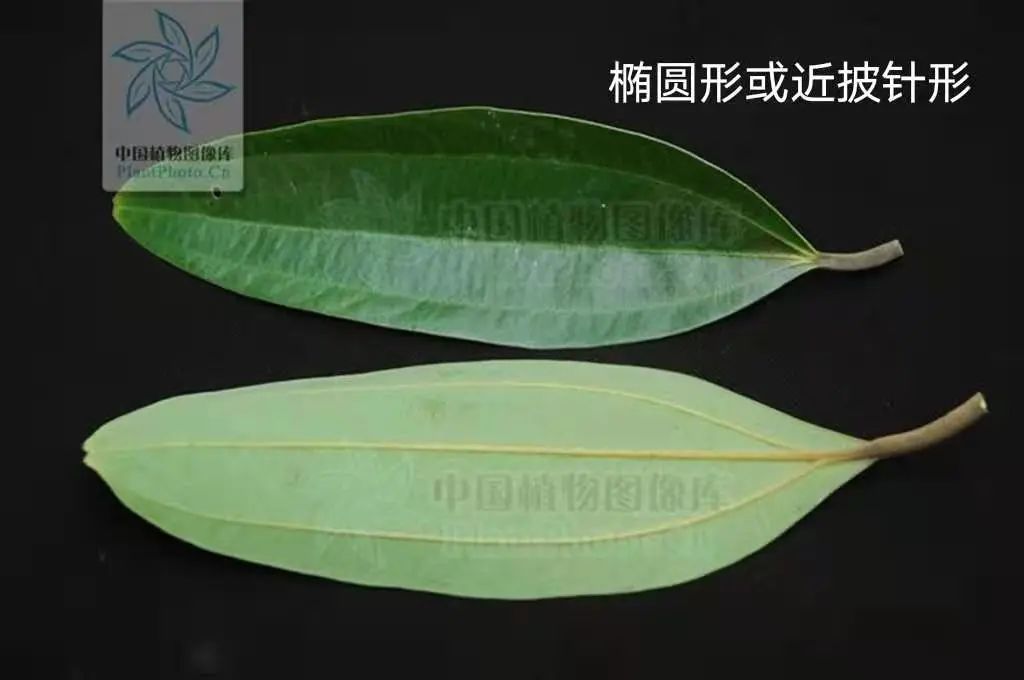
Flowers: The inflorescence is 8-16 cm long, with both the peduncle and axis covered in yellow hairs; the flower stalk is 3-6 mm long, also covered in yellow-brown hairs; the flower petals are ovate and elongated, densely covered with yellow-brown hairs on both sides.
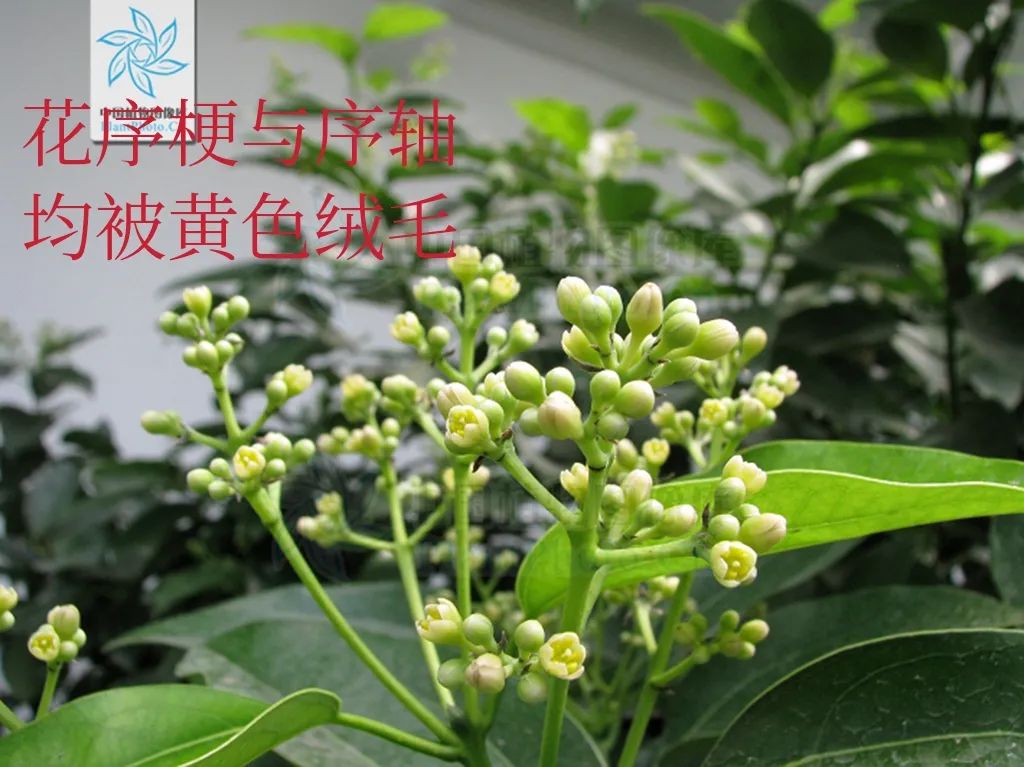
Fruits: The drupe is oval, about 1 cm long, black-purple, and hairless; the fruit cup is shallowly cup-shaped, 4 mm high, with a diameter of 7 mm, with edges that are flat or slightly toothed.
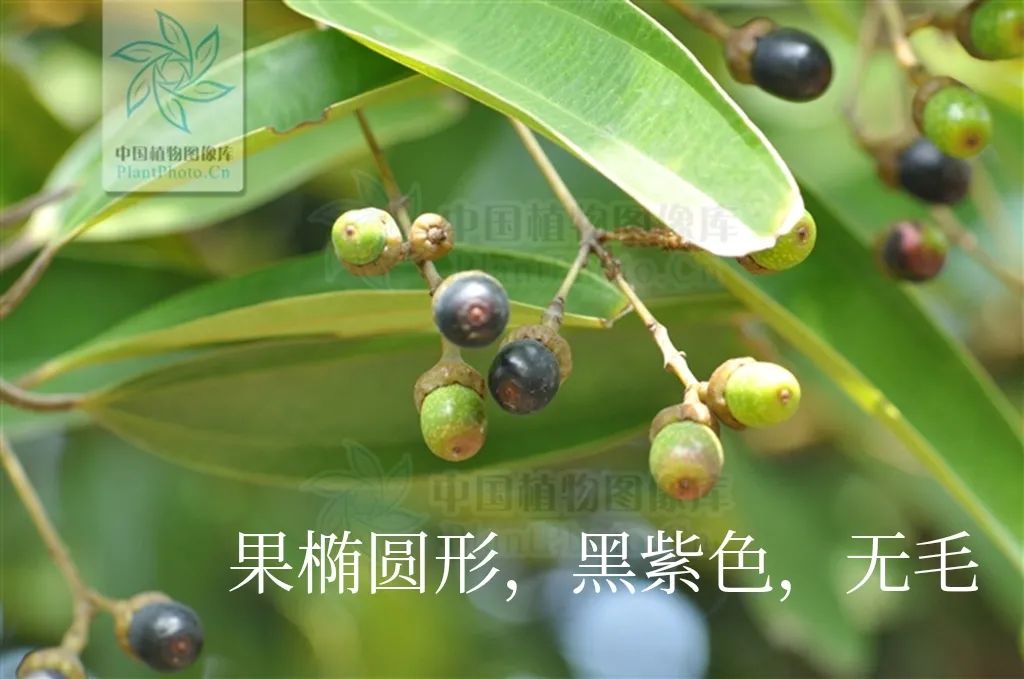
03
Characteristics of the Medicinal Material
This product is grooved or rolled, measuring 30-40 cm in length, 3-10 cm in width or diameter, and 0.2-0.8 cm in thickness. The outer surface is gray-brown, slightly rough, with irregular fine wrinkles and transverse raised pores, some of which may show gray-white spots; the inner surface is reddish-brown, slightly flat, with fine longitudinal stripes, leaving an oily mark when scratched. It is hard and brittle, easily broken, with an uneven fracture surface, the outer layer being brown and rough, while the inner layer is reddish-brown and oily, with a yellow-brown line between the two layers. The aroma is strong, with a sweet and spicy taste.
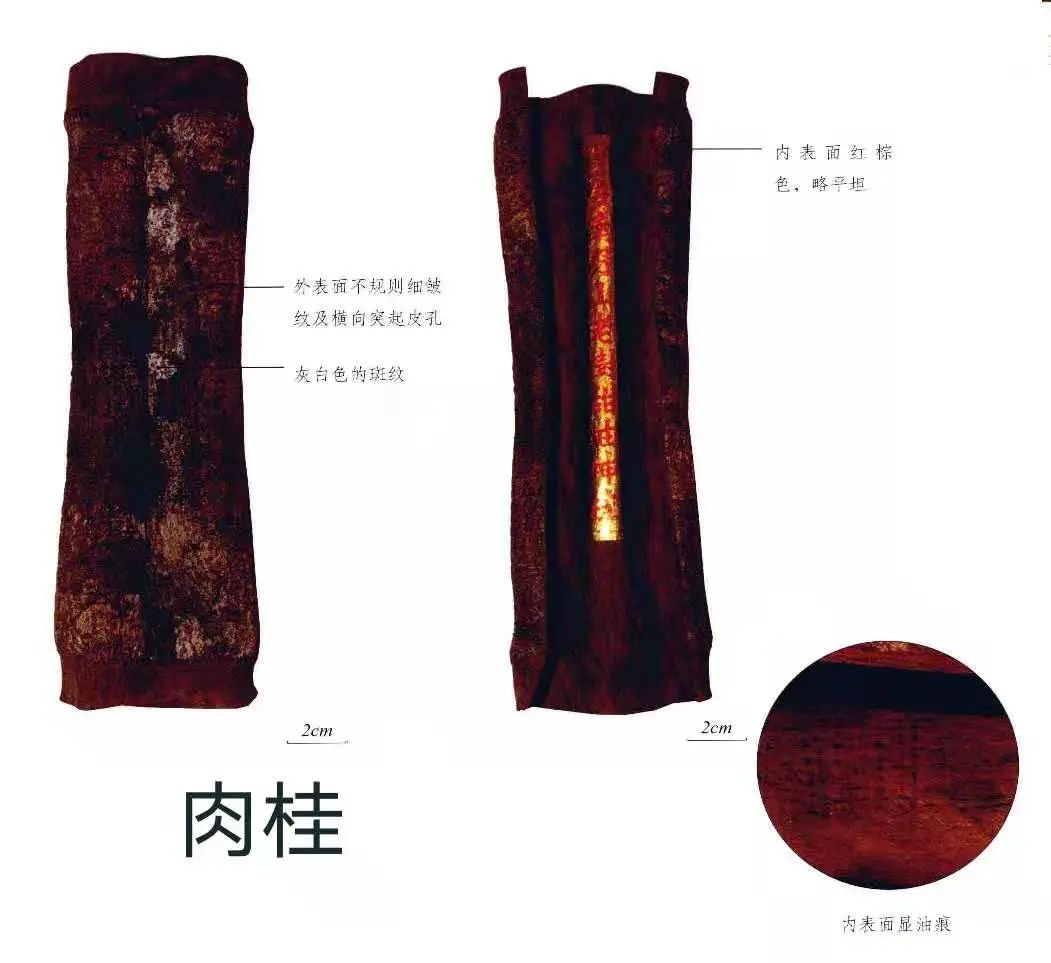
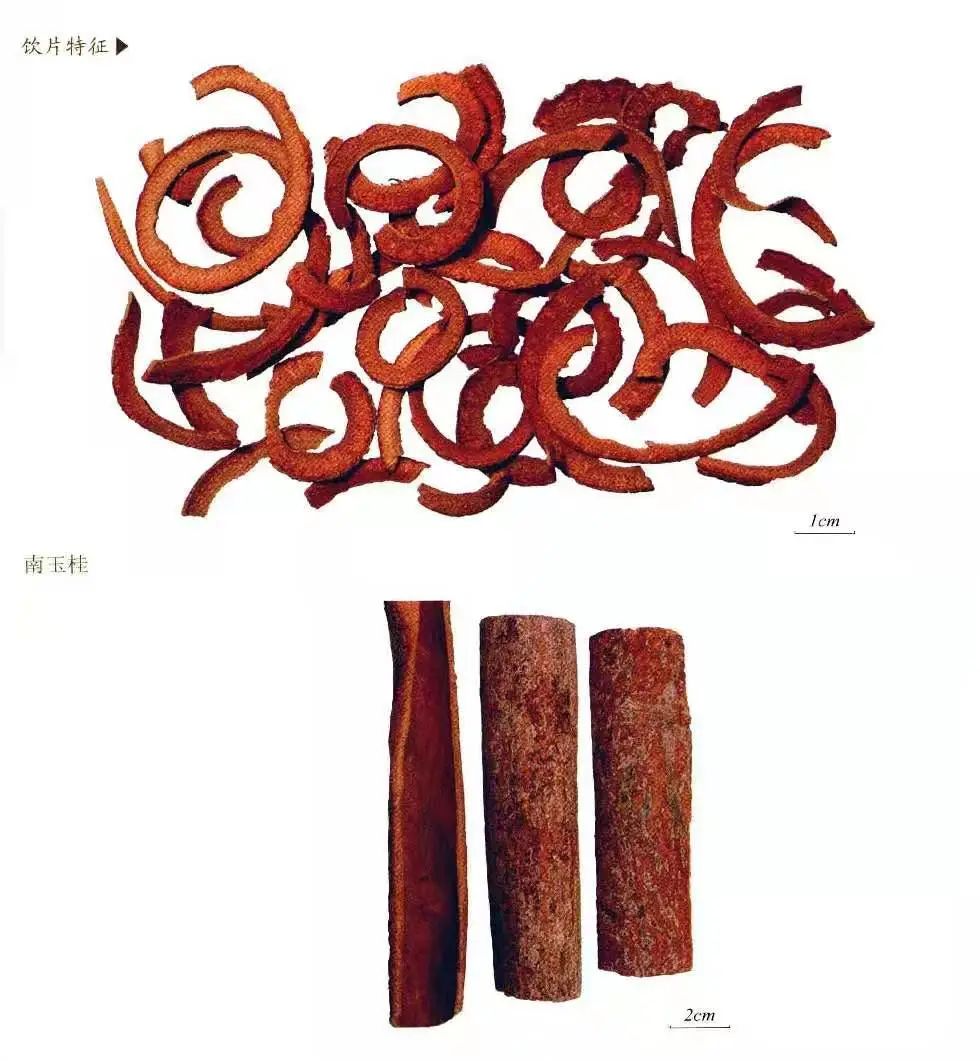
Note:
1. “Qibian Gui”: Refers to the dried bark of cinnamon harvested after more than ten years, with both ends slanted and pressed into a shallow groove shape between wooden boards.
2. “Nan Yu Gui”: Also known as “Qinghua Gui”, Qinghua is a place name in Vietnam, where the main variety of cinnamon, C. cassia Presl var. macrophyllum Chu, is produced. The characteristics of this medicinal material are similar to cinnamon, with a particularly fragrant taste when chewed, and it dissolves easily. It is traditionally considered to be of better quality.
04
Origin
Cinnamon is mainly distributed in Guangxi and Guangdong; it is also found in Hainan, Yunnan, Fujian, and Sichuan. The main production areas are Yulin, Qinzhou, Wuzhou, Pingnan, Fangcheng, and Ningming in Guangxi, as well as Zhaoqing and Zhanjiang in Guangdong. Guangxi has a long history of cultivation, producing about 90% of the national output.
05
Chemical Composition
It contains volatile oils, flavonoids, flavanols and their polymers, terpenes, lignans, and various other components, as well as inorganic elements and other compounds.
06
Clinical Preparation
Remove impurities and rough bark, and crush before use.
Cinnamon was first recorded in the “Bencao Biexilu” and has been mentioned in over 40 ancient texts with the preparation requirement of “removing rough bark”, believing that “its toxicity lies in the bark”. Some texts, such as the “Lunxinjing”, mention that cinnamon should be prepared “without fire”, as its aroma easily dissipates and loses efficacy when heated. However, some texts also describe different preparation requirements. For example, the Song Dynasty’s “Taiping Huimin Heji Ju Fang” mentions “lightly fried”, while the Ming Dynasty’s “Shoushi Baoyuan” mentions “fried black”, and the “Bencao Shu” mentions “fried yellow”. These are requirements proposed for different diseases. The “Bencao Gangmu” states, “Cinnamon is spicy and hot, capable of warming the uterus and breaking blood, hence it is mentioned in the record that it can induce abortion… If fried, it does not harm the fetus.” Currently, cinnamon is used fresh, taking the original medicinal material, removing impurities, scraping off the rough bark, and crushing it into small pieces.
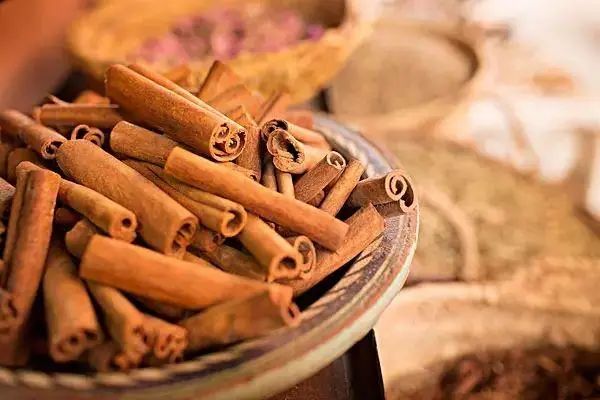
07
Taste and Meridian Entry
Spicy, sweet, very hot. Enters the Kidney, Spleen, Heart, and Liver meridians.
08
Functions and Indications
Cinnamon has the effects of tonifying fire and assisting yang, returning fire to the source, dispersing cold and alleviating pain, and warming and unblocking the meridians. It is used to treat impotence due to cold in the uterus, cold pain in the lower back and knees, kidney deficiency causing wheezing, floating yang, dizziness, red eyes, cold pain in the heart and abdomen, vomiting and diarrhea due to deficiency and cold, cold hernia abdominal pain, and dysmenorrhea.
Cinnamon and Gui Zhi (Cinnamon Twig) both come from the Lauraceae family, one being the bark and the other the tender branch. Both have the effects of warming the blood and assisting qi transformation, and dispersing cold accumulation. However, cinnamon excels in warming the interior and alleviating pain, entering the lower jiao to tonify kidney yang; while Gui Zhi excels in dispersing cold and is primarily used for upward movement and unblocking the meridians.
09
Dosage
1-5 g. In decoctions, it should be added at the end.
10
Precautions
Use with caution in those with bleeding tendencies and pregnant women; it should not be used with Chi Shi Zhi (Red Stone Fat).
11
Tea Substitute
Cinnamon and Clove Tea
Formula: 3 g of cinnamon, 6 g of clove.
Method: Brew with boiling water and drink, one dose per day.
Functions and Indications: Warms the kidney and disperses cold. Suitable for winter kidney yang deficiency, impotence, cold infertility, and cold pain in the lower back and knees.
Precautions: Avoid use in those with yin deficiency and excess fire, or blood heat.
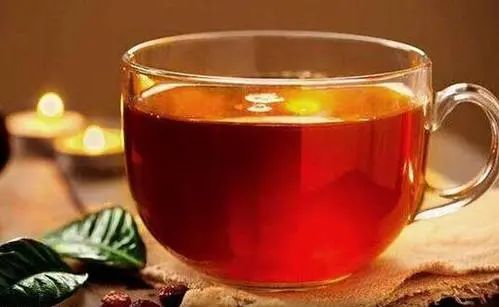
12
Summary of Materia Medica
“Bencao Gangmu”: Cold bi, wind and hoarseness, yin excess leading to blood loss, diarrhea, and seizures.
“Shennong Bencao Jing”: Primarily treats qi cough, reverse qi, throat obstruction, promotes joint function, and tonifies qi.
“Bie Lu”: Primarily treats heart pain, wind in the flank, flank pain, warms the tendons, unblocks the meridians, stops restlessness and sweating. Primarily warms the middle, benefits liver and lung qi, alleviates cold and heat in the heart and abdomen, cholera, cramps, headaches, lower back pain, stops salivation, cough, and nasal congestion; can induce abortion, strengthen bones and joints, unblock blood vessels, and regulate insufficiency; promotes the efficacy of all medicines, without fear.
“Yao Xing Lun”: Primarily treats nine types of heart pain, kills three worms, breaks blood, unblocks menstruation, treats soft feet, bi syndrome, numbness, retained placenta, relieves cough, reverse qi, and bi syndrome, stops unbearable abdominal cold, primarily treats diarrhea, and nasal polyps. Kills plant and wood toxins.
Further Reading:
[1] Chinese Academy of Sciences, “Flora of China” [M]. Beijing: Science Press, 1992-1993.
[2] National Pharmacopoeia Commission. “Pharmacopoeia of China” [M]. Beijing: China Medical Science Press, 2015: 1088
[3] Chen Hubiao, Zhao Zhongzhen. “Identification Atlas of Chinese Medicinal Materials” [M]. Fuzhou: Fujian Science and Technology Press, 2010. 505
[4] Guo Xuguang. “Cinnamon and Clove Tea for Warming the Kidney and Dispersing Cold” [J]. Family Medicine, 2020, 25(02): 53.



